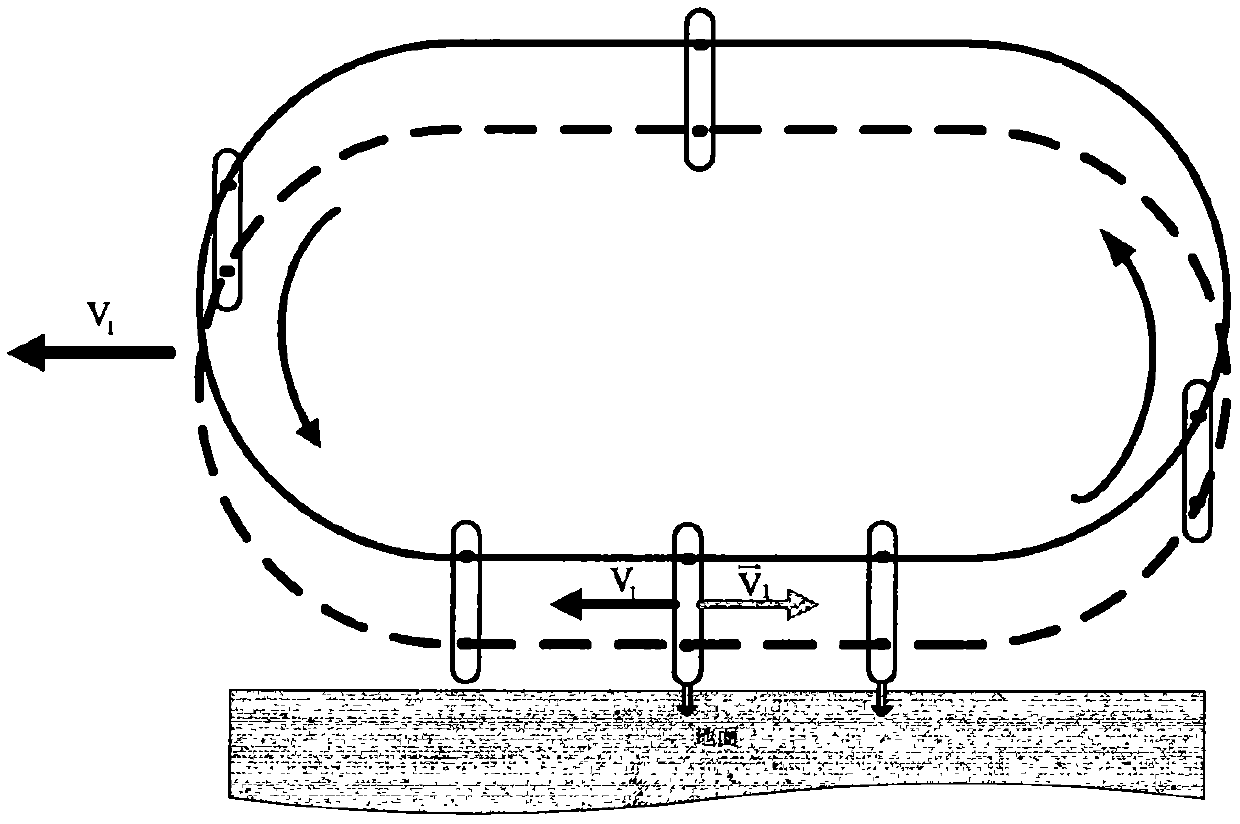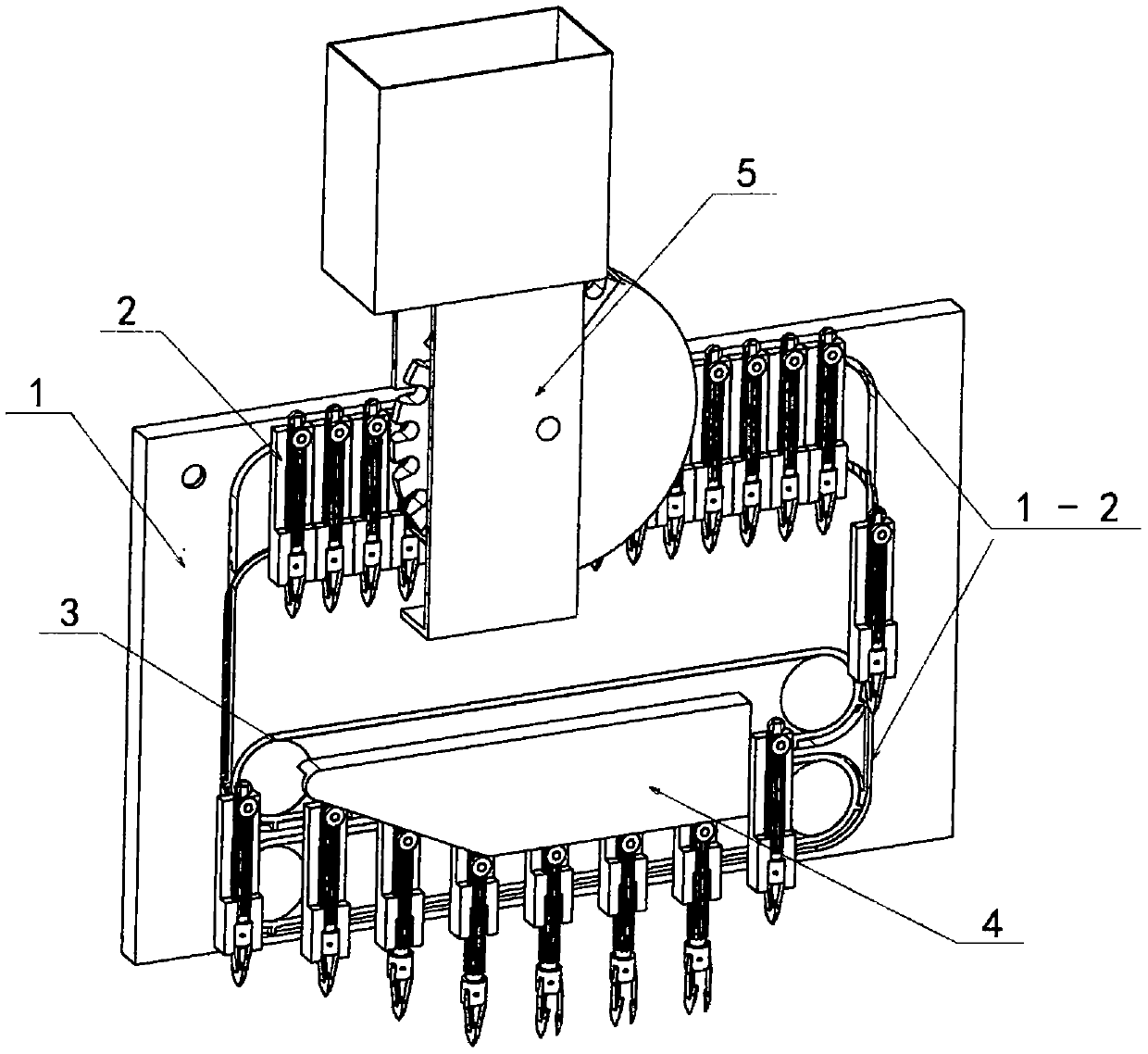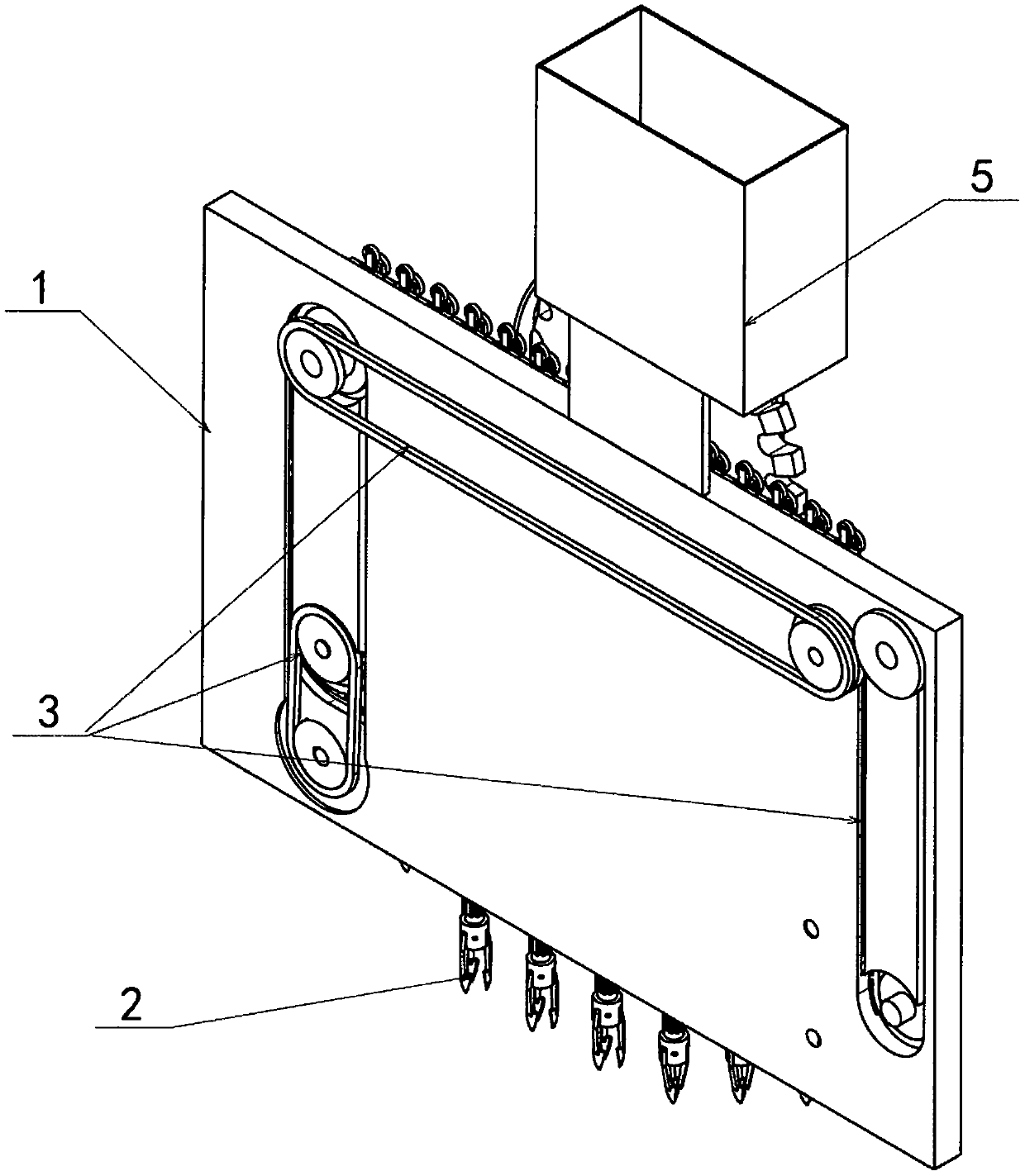Seeding device and seeder
A sowing device and frame technology, which is applied to the parts of the planter, sowing, until sowing, etc., can solve the problems of mutual interference of sowing devices and low planting efficiency, and achieve convenient planting distance, improve efficiency and stability, and improve versatility and adaptive effects
- Summary
- Abstract
- Description
- Claims
- Application Information
AI Technical Summary
Problems solved by technology
Method used
Image
Examples
Embodiment Construction
[0058] The technical solutions of the present invention will be described in further detail below with reference to the accompanying drawings and embodiments. Although exemplary embodiments of the present disclosure are shown in the drawings, it should be understood that the present disclosure may be embodied in various forms and should not be limited by the embodiments set forth herein. Rather, these embodiments are provided for more thorough understanding of the present disclosure and to fully convey the scope of the present disclosure to those skilled in the art.
[0059] Such as Figure 2 to Figure 26 As shown, the technical solution adopted in the present invention is: a kind of planting device, including the guide rail frame 1 that is provided with guide rail 1-2, a plurality of discrete state sowing transfer mechanism 2 that cooperates with described guide rail 1-2, installation The transshipment driving mechanism 3 on the guide rail frame 1 that drives the insertion t...
PUM
 Login to View More
Login to View More Abstract
Description
Claims
Application Information
 Login to View More
Login to View More - R&D
- Intellectual Property
- Life Sciences
- Materials
- Tech Scout
- Unparalleled Data Quality
- Higher Quality Content
- 60% Fewer Hallucinations
Browse by: Latest US Patents, China's latest patents, Technical Efficacy Thesaurus, Application Domain, Technology Topic, Popular Technical Reports.
© 2025 PatSnap. All rights reserved.Legal|Privacy policy|Modern Slavery Act Transparency Statement|Sitemap|About US| Contact US: help@patsnap.com



